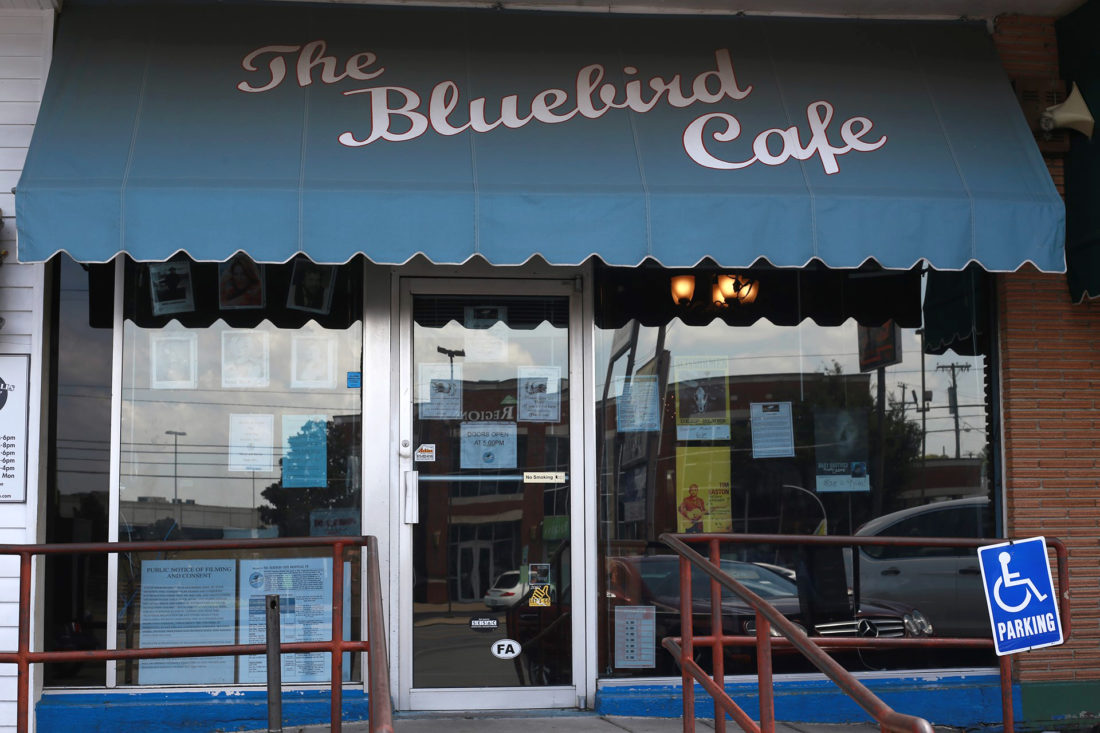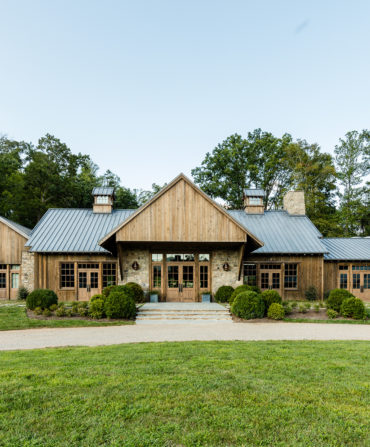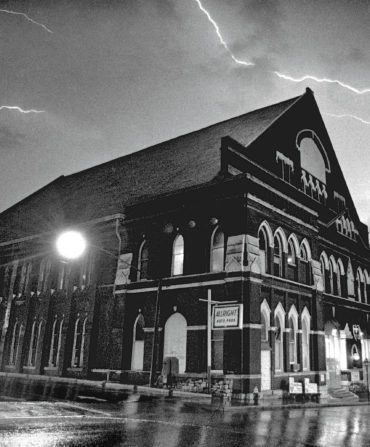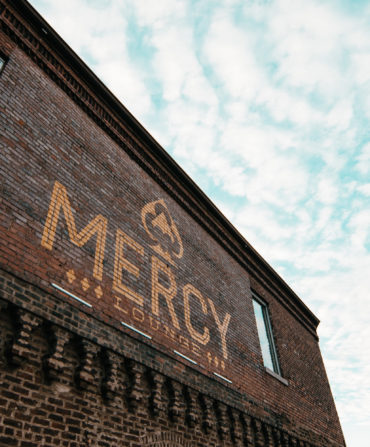If country music is three chords and the truth, you could say there’s been no better place in Nashville for truth-tellers than the Bluebird Cafe. Since founder Amy Kurland opened the beloved Green Hills–neighborhood venue in June 1982, the Bluebird has evolved from a bistro to a launch pad for the careers of such songwriters as Garth Brooks, Pam Tillis, Keith Urban, Trisha Yearwood, Faith Hill, and Taylor Swift.
That esteem, coupled with calls from Hollywood—from 1993’s Bluebird-set A Thing Called Love, to a live show that aired on Turner South, to its inclusion on the TV series Nashville—catapulted the strip-mall nook into a destination for visitors from around the globe. These days, the Bluebird is more popular than ever—reservations go quickly, including for the thirty-fifth anniversary celebration on Wednesday, June 7, though there are always a few first-come, first-served seats in the pews. While you queue up, here’s more about what makes the “itty-bitty club,” as Tillis calls it, so special.
FROM LUNCH TO LAUNCH
Amy Kurland grew up in Nashville in a musical family—her father was the session musician and arranger Sheldon Kurland. After she dropped out of culinary school, she decided to open a restaurant, picking Green Hills because the neighborhood was affordable at the time.
Amy Kurland, founder: “I was dating a guitar player, and he and his friends said, If you’re going to open a restaurant, why don’t you put a stage in there and we’ll play music? So I started out being this two-headed creature: During the day, we were this Green Hills ladies-lunch place, with flowered tablecloths and tuna stuffed into tomato halves. And then in the mid-afternoon, we would take the tablecloths off and haul the sound system out for the live music.”
Erika Wollam Nichols, current COO and president of the Bluebird through the nonprofit Nashville Songwriters Association International, to whom Kurland sold the venue in 2008: “I moved to Nashville in 1984, to enroll in Belmont College, and I was looking for a waitress job. When I started working there, the Bluebird was not what it is today. People like Chet Atkins and Minnie Pearl would come in for lunch.”
Kathy Mattea, the Grammy-winning singer of such hits as “Eighteen Wheels and a Dozen Roses,” and the first artist to be signed after playing the Bluebird: “I came up in Nashville through the studios as a demo singer for songwriters. At a certain point I thought, If you really want this as a career, you need to learn how to front a band. The Bluebird had just opened, and in the first year, it was not booked by Amy, it was booked by this couple who had run the Exit/In and some other clubs in town. Their names were Hugh and Judy Bennett. I called Judy and said, ‘I’ve got this idea I want to talk to you about after the holidays. I think I need to learn how to stand in front of a band.’ And she was like, ‘How about January 24 [1983]?’ I said, ‘Oh, um, um …’ Suddenly, a month out, I had this gig on the books. I had to scramble. But I could feel a momentum. People were reacting, asking who I was on demos. So when I played in January, I pulled up to the Bluebird, and the crowd could not fit in the club. I was like, Who are these people? I couldn’t get a parking place. By March, I had a record deal.”
Kurland: “We were doing every kind of music. Whoever wanted to play. And then one night, Hugh booked a writers’ night. It was like finding the right dress—oh, this is the right thing for this space. It wasn’t just that people weren’t talking—they weren’t—but they were hanging onto every word. I said, ‘We have to do more of these.’ Over time, I decided to turn it into a writers’ venue.”
THE WRITERS IN THE ROUND
In 1985, four successful songwriters—Thom Schuyler, Fred Knobloch, Don Schlitz, and Paul Overstreet—performed the first “in the round,” moving from the Bluebird’s stage to a circle in the middle of the room, taking turns playing each other’s songs. The format was instantly popular. In 1988, four female songwriters, Tricia Walker, Karen Staley, Ashley Cleveland, and Pam Tillis, decided to see if they could conjure the same magic.
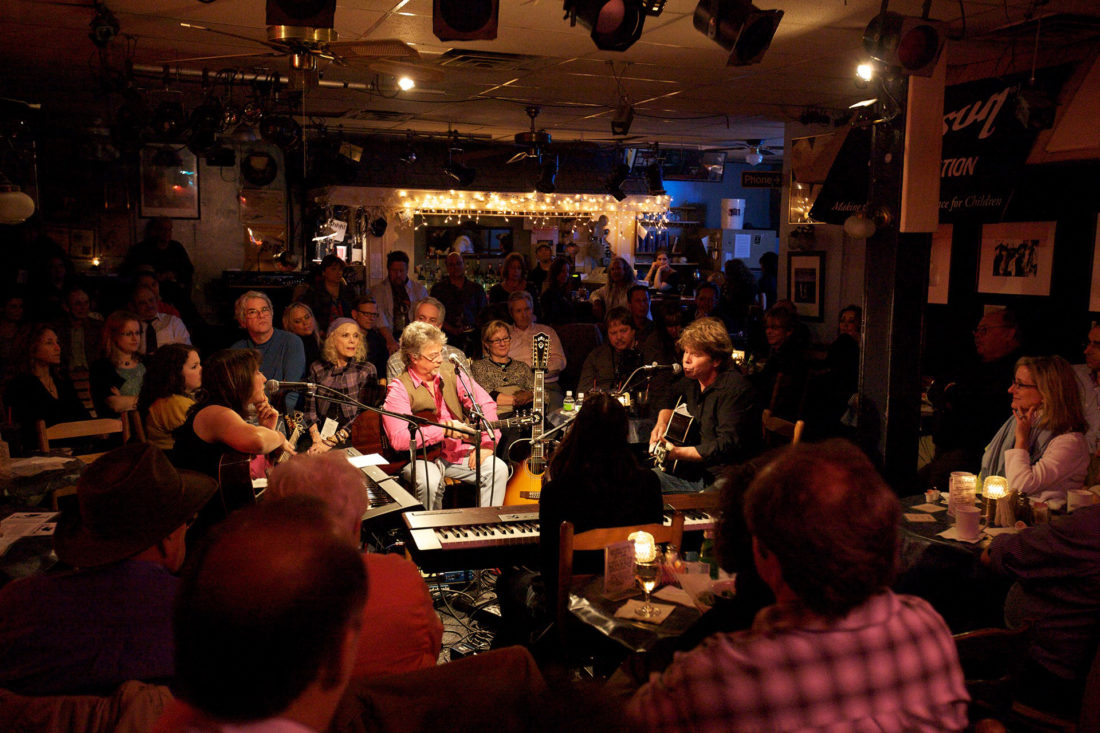
COURTESY OF THE BLUEBIRD CAFE
Tricia Walker, songwriter for artists such as Patty Loveless and Alison Krauss, and backup musician for the likes of Shania Twain: “It was like graduate school. You sit there and listen to what these professionals were doing, and you listen to how they put their lines together, and you study how they write. You either went home incredibly inspired, or incredibly depressed.”
Kurland: “Because it’s writers, they tell you the story. You know, ‘I wrote this song because my dog jumped out of the bed of my truck, and I lost him and I was afraid.’ So from the very minute that they start to play the song, you’re engaged, you’re really listening for the story.”
Walker: “[Staley, Cleveland, Tillis, and I], we were all struggling songwriters, so we got together one time, and we rehearsed—I think I still have the song list in my guitar case. It was amazing chemistry from the first night. We would play the Bluebird three or four times a month. Over the next two or three years, Ashley was signed to a major deal, Karen had a major deal, Pam had a major deal, and I was writing for a major company. We still get together a couple times a year to do a benefit for folks.”
Mattea: “Many times I found songs listening to an ‘in the round.’ I’d be all over them. Has anyone recorded it yet?”

Photo: David McClister
Kathy Mattea.
Nichols: “When the surge of country music happened [in the eighties], was when the Bluebird took off. There were so many record labels in town then, so many publishers—country music was huge and everybody was jumping on the bandwagon. Everybody was trying to sign some artist, and the Bluebird was a good place where that could happen.”
Pam Tillis, Grammy winner, and chart-topping singer-songwriter of such hits as “Mi Vida Loca (My Crazy Life)”: “I’ll never forget being about a mile or two away from the Bluebird, and somebody beeped at me to get me to roll down my window, and it was a whole car of Japanese people, and they were going, ‘How do you get to the Bluebird?’ I thought, Oh my gosh, it’s getting bigger!”
THE BLUEBIRD EFFECT
According to those who have played the Bluebird over the years, something powerful happens when a great song is performed at the intimate venue.
Walker: “The Bluebird is a perfect place for a songwriter to gauge whether their material is ready or not, by the reaction of the audience. The songs are untouched, they’re fresh from the womb. You’ll hear other songwriters talk about songs as their children, but it’s really that point where you let them go. You push them out of the nest, see if they can fly.”
Nichols: “When a song that’s amazing gets played, the air goes out of the room. Tom Douglas playing ‘The House That Built Me’ [which became a huge hit for Miranda Lambert], for example. You can feel that something powerful is happening. You can see the emotion on the person who’s delivering the song. And then you look across the room, and you see somebody also in tears, at a song you’re both moved by—it’s a bonding thing.”
Mattea: “My husband, Jon [Vezner], was a successful songwriter; I was an up-and-coming singer. He wrote this song called, ‘Where’ve You Been.’ I knew this was a true story, and a really important story in his life—what if people trashed the song? The song was so freaking sad. He was playing with an organization called the Nashville Entertainment Association, to promote Nashville as more than country music. And they had a showcase [at the Bluebird] where they let unsigned people play. He did ‘Where’ve You Been.’ In the audience that night, I sat there and watched. I heard audible sobs, people uncontrollably crying. I saw what it did to that audience. I said, ‘We’re doing this song.’” [The song and Mattea’s performance of it both went on to earn Grammys]
Tillis: “I had a song called ‘Maybe It Was Memphis,’ and I had recorded it on Warner Brothers, and it just did nothing. But every time I would play that song at the Bluebird, people would go crazy. So even though the song had bombed, the response emboldened me to do something that’s not very common in Nashville. My next record label was Arista Records, and I re-recorded it. And it became a big hit for me [in 1992]. At the time, Garth Brooks was hotter than ten miles of Georgia asphalt. That’s the only reason it didn’t get to number one.”
Nichols: “Garth wasn’t Garth when he first started here. He was just another guy who was ‘in the round,’ trying to get a deal.”
Kurland: “Garth Brooks talks about the night he heard Tony Arata play ‘The Dance,’ that he was the only person in the room who was really paying attention. And he said to Tony, ‘When I get a record deal, I’m going to record that song.’”
THE AUDITION
With dreams of record deals on the line, every hungry songwriter in Nashville wanted to play the Bluebird. But they had to impress one person first: Amy Kurland.
Kurland: “There’s always that fear of, What if I miss something? Especially in that audition process where you’re listening to eighty or ninety songs in a row. You’re going to zone out sometimes. That’s when you know you have a good song—if you’re in the middle of song fatigue, and something suddenly catches your ear.”
Deana Carter, multi-platinum singer-songwriter of number-one hits such as “Strawberry Wine” and “We Danced Anyway” : “I was one of those flies on the wall trying to get the nerve. Amy was pretty stiff on who she let play. It was one of the tougher spots. I can remember standing outside in the snow in a long line of people to get in and audition. You’d go in and play a song and she would say yes or no. It was intense.”
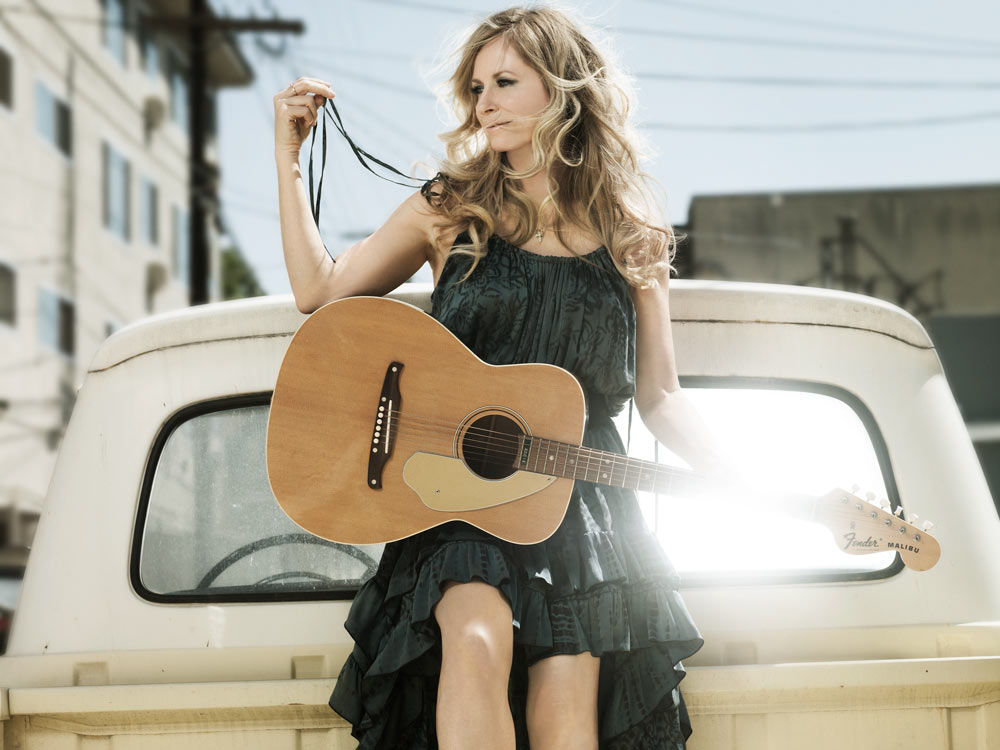
Photo: Courtesy of Deana Carter
Deana Carter.
Kurland: “If, when they were telling me that story, I cared? If they’re singing something, and I want to know what’s going to happen next? Or if I get a twinge in my heart—oh that hurts—when they’re talking about their pain? A really great song is a song where you are taken away by what’s happening in it.”
Walker: “It was Amy’s vision. She became the patron saint to songwriters.”
Kurland: “I can’t sing, I can’t play, but the fact I could help great music get out there, that’s very thrilling.”
THE RULE
Anyone who has attended a show at the Bluebird knows one thing: You don’t dare talk during a performance, or you’ll get shushed.
Carter: “The Bluebird was the most reverent room besides the Ryman. The food came out quiet. The beer bottles were opened quietly. The ice in the drink, quiet. Whatever was going on was an homage to what was going on in the room musically.”
Kurland: “People aren’t there to get drunk, people aren’t there to meet their next mate. They aren’t there to see and be seen or anything else.”
Carter: “They had a pony-popper, and if you talked, they’d go, whack!”
THE NASHVILLE REVERB
When Nashville debuted on ABC in 2012, the television show set many of its scenes at the Bluebird—a few of the characters even worked there. Since then, tourists have made the venue a must-see stop.
https://www.youtube.com/watch?v=NWQN4ag-Zf4
Walker: “Over the course of twenty-five, thirty years, you had a lot of those same audiences. But with the advent of Nashville, it’s tougher and tougher for that old local audience to get in and see a show.”
Nichols: “The Bluebird itself has become the celebrity. And people come just to be there—they don’t know what they’ve come for, or why. That’s a challenge, because we have people who will come from all over the world because they do know what the Bluebird is, and sometimes they can’t get in. That being said, I see it as an opportunity to help people love songwriters. People who have no idea why they’re here will walk out and they’re changed.”
Tillis: “I’m the only person, as far as I know, that’s been on the set of three different Bluebirds: I was in the movie The Thing Called Love, so I was on the soundstage Bluebird in L.A. It was funny and weird—I wanted to walk off the soundstage and look for my car, like I had so many nights when I’d been there too late. And then, of course, the real one so many times. And then I’ve been on the Bluebird soundstage here for Nashville.”
Nichols: “I had a group of women walk in last week and they were like, Oh my god, this is it? People think because of all the attention, all the people outside getting their picture taken, they might think that we’re making a lot of money. And I have to remind people that we have two shows a night, ninety seats each, that’s 180 people a night that buy food and drink, and that’s what we make our money on. All the door money goes to the songwriters. And the food and beverage sales are about what we’ve always done.”
THE LEGACY LIVES ON
Even though Kurland retired and sold the venue in 2008, the NSAI and Nichols are determined for it to stay true to its roots. Offerings have expanded, though, to include special Bluebird-style concert series at Tennessee’s Blackberry Farm and Utah’s Sundance Mountain Resort. A documentary on the Bluebird is also in the works.
Nichols: “I kind of dig my heels in—we’re not changing this, we’re not getting bigger, we’re not trying to buy another place or add on a top floor or have a green room. There are things that are just really precious the way they are. Could we make more money if we had a bigger room? Probably, for six months, but something inevitably would be lost.”
Kurland: “In my era, the thing I heard more than anything from the audience was, I didn’t think I liked country music. It turns out, you didn’t not like country music, you just never listened to country music before because you had an attitude about it. That’s part of the Bluebird’s larger legacy: We helped popularize country music to a different audience. The CMA [Country Music Association] may say, We were putting in millions of dollars into it at that time, but we were over there providing a place for people to hear music they’d never been willing to listen to—people would come to the Bluebird who weren’t going to the Opry.”


